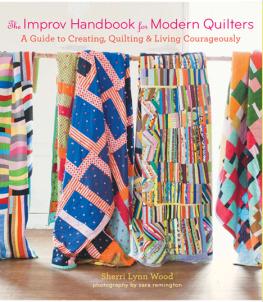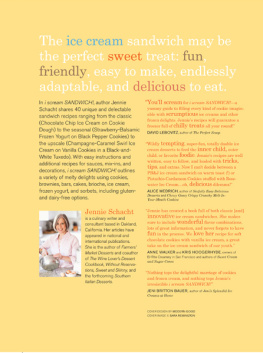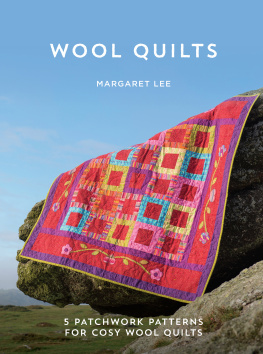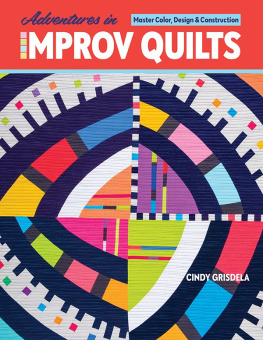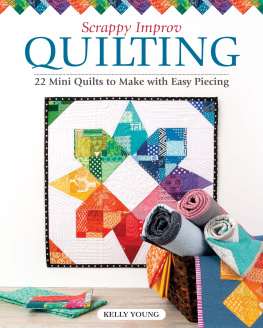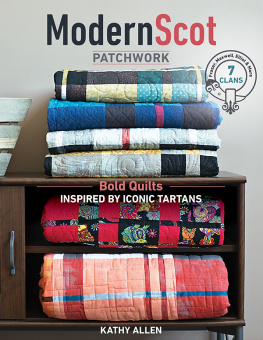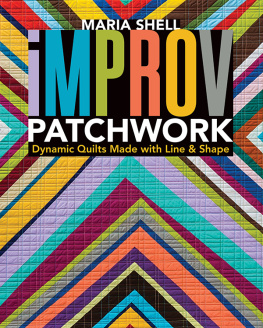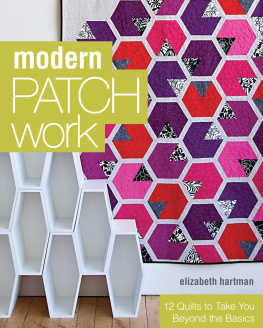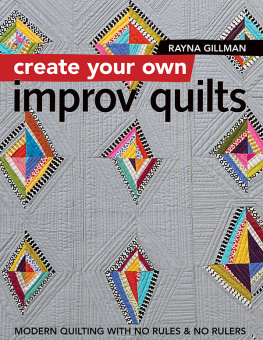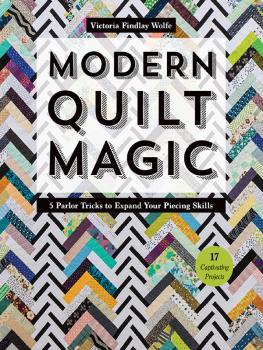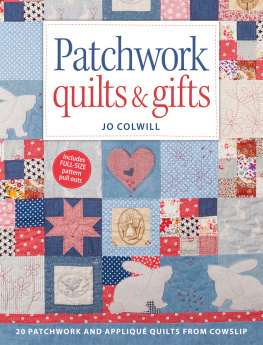

contents
1
Improvising From a Score
2
Quilt Scores
3
Exploring Color
4
Patchwork Techniques
5
Finishing Techniques
Introduction
When I was younger, I would rather quilt than eat.
Pauline Patton, from Accidentally on Purpose by Eli Leon
Almost twenty-five years ago I saw the exhibition Whod A Thought It at the Ackland Art Museum at UNC-Chapel Hill, where I was living at the time. Organized by folklorist, collector, and Guggenheim Fellow Eli Leon, this was one of the first exhibitions of African-American quilts in the improvisational style to tour the country. Elis breathtaking collection of quilts left me in awe and changed the course of my life. I began improvising in patchwork, which led to my professional career as an artist. Two years ago, just as I began work on The Improv Handbook, I met Eli Leon at a presentation I was giving to the East Bay Modern Quilt Guild. We became friends. We now visit regularly, usually at his home, where he gives me full access to his collection. We discuss the aesthetic qualities and the stories behind the quilts and their makers. Ive been given an incredible opportunity to incorporate some of Elis brilliant research along with my experiential knowledge of improvisatory practice into this practical guide for modern quilters.
Improvisation is at the heart of every great creative endeavor. Music, dance, theater, painting, drawing, design, cooking, conversation, relationships, play, life, and even science benefit, survive, grow, transform, and innovate through the flexibility of mind that the improvisational process engenders. We all improvise every day, so why not bring it into our quilt making?
Eli put the whole matter so clearly in an essay published in 2006 by Figge Art Museum, Davenport, Iowa, in a catalogue based on the exhibit Accidentally on Purpose. When a flexible pattern is handed on from one quiltmaker to another it is the range of possibilities that is transmitted. And thats my goal for this book; to hand to you flexible patterns, called scores, so that you may discover your range of improvisatory possibilities.


The Improv Handbook offers a unique approach to patchwork that doesnt rely on step-by-step instructions for replicating fixed patterns. Instead it provides frameworks, or scores, for flexible patterning that support improvisatory exploration. It also includes a comprehensive set of tools that will empower you to move beyond beginner-level improv to create with an authentic voice, speaking what is genuine and real to you, in a voice that is not copied or false.
Throughout youll find scores to follow that explore approaches and methods from different improvisational disciplines. As you follow each score, youll set limits to your improvisation and create a quilt based on those limits. With each score youll find Design Consideration sidebars with design concepts and exercises for you to consider as you follow any of the scores in the book. The Mind Tool sidebars offer exercises for fostering fearlessness, presence, and curiosity as you embark on your improvisational journey.
While each score builds on the previous ones, the information flows forward and backward throughout the book. You will be asked to build on techniques learned for earlier scores or referred back to a particularly apt Design Consideration sidebar. If you are a beginner, you may want to start with Score #1 and work your way through the scores in the order they are given. Otherwise, jump in according to your skill level and improvisational experience and what is most appealing for you to explore. You may even want to begin with the chapter on improvisational patchwork techniques, which starts on .
If you picked up this handbook to learn how to make quilts that look like mine, Im sorry to disappoint. I cant teach you how to do that. I cant even replicate my own quilts, because each one is unique to the moment it was made. But I can help you hone your improvisational skills. In the gallery after each score you can see how contributors interpreted it. Now it is your turn.
My hope is that you will approach each score as an opportunity for discovery and pleasure. The goal is to have fun and learn from everything you do and from every quilt you make. Take each quilt as a beacon guiding you ever closer to knowing your own patterns and clarifying your authentic voice. Lets begin!

1
Improvising From a Score
What Is Improv?
Before reading further, take a few minutes to brainstorm what improv means to you right now.
Whenever I teach an improvisational patchwork class, I ask my students this question and am always delighted by the array of answers I receive (see right).
What resonates with you as you read this list? What would you like to add to it? Is there anything unexpected on this list? Anything you disagree with?
You may be wondering why I am asking you to ponder all these questions instead of just telling you what improv is all about. The answer is because improvisation is about exploring, not explaining. Its about finding your own way and making your own decisions through noticing your own preferences and patterns of mind.
In this chapter, I share the things you need to prepare for your improvisational patchwork journey, and I describe a bit more the vehicle for the journey: the score.
working without a plan!
thinking on your feet!
figuring out as you go!
making do with what you have!
problem-solving!
taking risks!
breaking the rules!
decision-making!
anything goes!
accepting what is!
creating spontaneously!
freedom and responsibility!
freedom from perfection!
setting your own limits!
Preparing to Improvise
Developing an improvisatory patchwork practice requires a rethinking of all aspects of the craft, including basic understandings about the flexible use of tools as well as fabric, workspace, techniques, color, design, and pattern. Nothing is fixed. Before beginning, pause here to reconsider everything you know about the basics of quilt making.
TOOLS
Tools are designed to function well when used a particular way, but that doesnt mean they cant be improvised to do something different or new. The table knife was designed to cut food, but sometimes I use the handle to bang on the stuck lid of a jar to loosen it. If you have to get something done, use whatever tools you have available, in any way possible, to achieve the results you desire.
Next page
